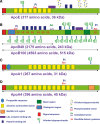Potential biomarkers in psychiatry: focus on the cholesterol system
- PMID: 22304330
- PMCID: PMC3823072
- DOI: 10.1111/j.1582-4934.2012.01543.x
Potential biomarkers in psychiatry: focus on the cholesterol system
Abstract
Measuring biomarkers to identify and assess illness is a strategy growing in popularity and relevance. Although already in clinical use for treating and predicting cancer, no biological measurement is used clinically for any psychiatric disorder. Biomarkers could predict the course of a medical problem, and aid in determining how and when to treat. Several studies have indicated that of candidate psychiatric biomarkers detected using proteomic techniques, cholesterol and associated proteins, specifically apolipoproteins (Apos), may be of interest. Cholesterol is necessary for brain development and its synthesis continues at a lower rate in the adult brain. Apos are the protein component of lipoproteins responsible for lipid transport. There is extensive evidence that the levels of cholesterol and Apos may be disturbed in psychiatric disorders, including autistic spectrum disorders (ASD). Here, we describe putative serum biomarkers for psychiatric disorders, and the role of cholesterol and Apos in central nervous system (CNS) disorders.
© 2012 The Authors Journal of Cellular and Molecular Medicine © 2012 Foundation for Cellular and Molecular Medicine/Blackwell Publishing Ltd.
Figures



Similar articles
-
Serum protein profiling and proteomics in autistic spectrum disorder using magnetic bead-assisted mass spectrometry.Eur Arch Psychiatry Clin Neurosci. 2010 Apr;260(3):249-55. doi: 10.1007/s00406-009-0066-5. Epub 2009 Sep 27. Eur Arch Psychiatry Clin Neurosci. 2010. PMID: 19784855
-
The potential of biomarkers in psychiatry: focus on proteomics.J Neural Transm (Vienna). 2015 Aug;122 Suppl 1:S9-18. doi: 10.1007/s00702-013-1134-6. Epub 2013 Dec 20. J Neural Transm (Vienna). 2015. PMID: 24357051 Review.
-
A proteomic study of serum from children with autism showing differential expression of apolipoproteins and complement proteins.Mol Psychiatry. 2007 Mar;12(3):292-306. doi: 10.1038/sj.mp.4001943. Epub 2006 Dec 26. Mol Psychiatry. 2007. PMID: 17189958
-
Cholesterol and mental disorder.Br J Psychiatry. 1996 Dec;169(6):682-9. doi: 10.1192/bjp.169.6.682. Br J Psychiatry. 1996. PMID: 8968624 Review.
-
Biomarkers of psychiatric diseases: current status and future prospects.Metabolism. 2015 Mar;64(3 Suppl 1):S11-5. doi: 10.1016/j.metabol.2014.10.026. Epub 2014 Oct 30. Metabolism. 2015. PMID: 25467847 Review.
Cited by
-
Systematic review and meta-analysis of mass spectrometry proteomics applied to ocular fluids to assess potential biomarkers of age-related macular degeneration.BMC Ophthalmol. 2023 Dec 12;23(1):507. doi: 10.1186/s12886-023-03237-0. BMC Ophthalmol. 2023. PMID: 38087257 Free PMC article.
-
Biomarkers in autism.Front Psychiatry. 2014 Aug 12;5:100. doi: 10.3389/fpsyt.2014.00100. eCollection 2014. Front Psychiatry. 2014. PMID: 25161627 Free PMC article. Review.
-
Mass spectrometry as a tool for studying autism spectrum disorder.J Mol Psychiatry. 2013 May 21;1(1):6. doi: 10.1186/2049-9256-1-6. eCollection 2013. J Mol Psychiatry. 2013. PMID: 25408899 Free PMC article. Review.
-
Specific alterations in plasma proteins during depressed, manic, and euthymic states of bipolar disorder.Braz J Med Biol Res. 2015 Nov;48(11):973-82. doi: 10.1590/1414-431X20154550. Epub 2015 Sep 8. Braz J Med Biol Res. 2015. PMID: 26375446 Free PMC article.
-
Proteomic profile of serum from patients with schizophrenia spectrum disorders.PeerJ. 2022 Aug 30;10:e13907. doi: 10.7717/peerj.13907. eCollection 2022. PeerJ. 2022. PMID: 36061748 Free PMC article.
References
-
- Ross JS. Biomarker-based selection of therapy for colorectal cancer. Biomark Med. 2011;5:319–32. - PubMed
Publication types
MeSH terms
Substances
LinkOut - more resources
Full Text Sources
Other Literature Sources
Medical
Molecular Biology Databases

